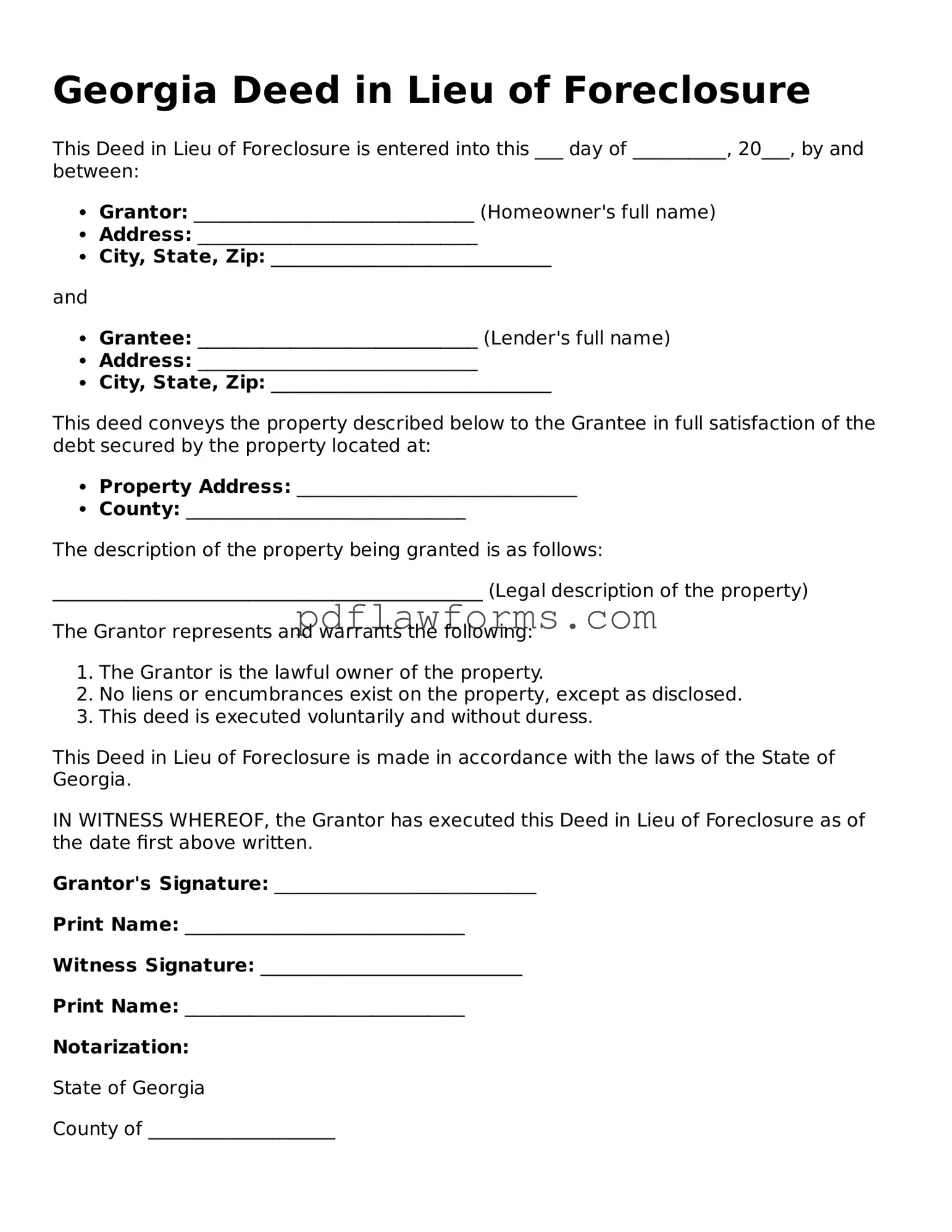When filling out the Georgia Deed in Lieu of Foreclosure form, many people inadvertently make mistakes that can complicate the process. One common error is failing to provide accurate property information. It’s essential to include the correct legal description of the property, as any discrepancies can lead to delays or even rejection of the deed. Double-checking this information can save time and frustration later on.
Another mistake involves not obtaining the necessary signatures. All parties involved in the transaction must sign the deed, including any co-owners. If a required signature is missing, the deed may not be valid. It’s wise to ensure that everyone who has a stake in the property is present and ready to sign before submitting the form.
People often overlook the importance of notarization. In Georgia, a Deed in Lieu of Foreclosure must be notarized to be legally binding. Failing to have the document notarized can render it ineffective. It’s a simple step, but one that is frequently forgotten.
Another common error is not including a clear statement of intent. The form should clearly indicate that the borrower is voluntarily transferring the property to the lender to avoid foreclosure. Without this clarity, the lender may have difficulty processing the deed, leading to further complications.
Additionally, many individuals fail to understand the implications of the deed. Some mistakenly believe that a deed in lieu of foreclosure is the same as a short sale. While both options can help avoid foreclosure, they have different consequences. Understanding these differences can help homeowners make more informed decisions.
People sometimes neglect to consult with a legal professional. While it may seem straightforward, the process can be complex, and having legal guidance can help navigate potential pitfalls. An attorney can provide valuable insights and ensure that all necessary steps are taken correctly.
Furthermore, individuals may not consider the tax implications of transferring the property. In some cases, the IRS may view the forgiven debt as taxable income. It’s crucial to be aware of these potential tax consequences and plan accordingly.
Lastly, not keeping copies of the completed form can lead to issues down the line. Always retain a copy of the signed deed for personal records. This documentation can be essential if any questions arise in the future regarding the transfer of ownership.
